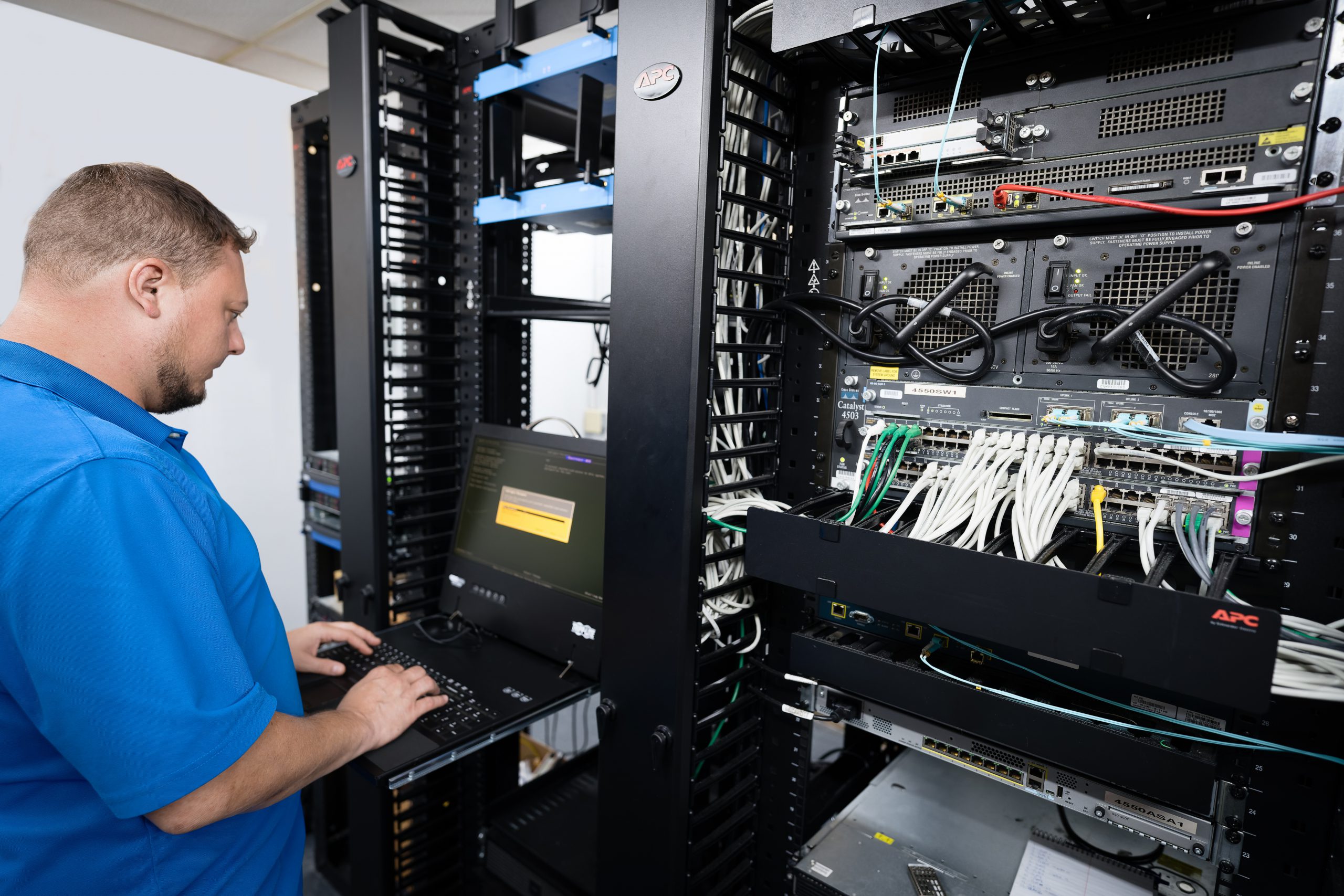Cybersecurity
Layers of systems work together to keep computers and information safe.
Our layered approach
Cybersecurity today doesn’t live at the office—it lives at the user’s device. In order to combat today’s threats, businesses need endpoint detection and response (EDR). Remote access to your systems for outside users and partners is vital for today’s businesses, but it’s also a fertile avenue of attack for cybercriminals. Allowlisting, Blacklisting, and Network Control are considered the gold standards when it comes to stopping ransomware, viruses, and other malicious software. Typically, these enterprise-class tools often come with significant management overhead, long deployment times, and red tape that makes business operations difficult. We use a combination or layers, including EDR, Content Filtering, Password Managers, Multi-Factor Authentication, Zero Trust all monitored by our SOC.

Network Layer Protection
Content filtering can act like a gatekeeper for the internet by reducing malicious sites by blocking them. Firewalls have always been the go to for network security to protect the network from intrusion, but a stateful firewall is simply not enough anymore. Every organization needs a full arsenal of scanning engines to protect their network from intrusions, phishing attempts, malware, ransomware and more.
Password Managers and MFA or 2FA
A password manager is like a special book that keeps your passwords safe. You only need to remember one strong password to open the book. Inside, it has all your other passwords, so you don’t forget them. Duplication of passwords on multiple websites is never a good idea and with every website on the internet needing it’s own password, keeping complex passwords is at the forefront of security.
MFA or 2FA is like using two keys to open a treasure chest. The first key is your complex password that you store in your password manager, and the second key is a special code from your phone. It adds a layer to authentication. While this is now almost a standard on most systems, in some cases, it is not turned on by default.
EDR is like a superhero that looks for bad guys hiding in your computer.
NGAV is like a shield that protects your computer from viruses.
Threat Detection & Response is like having your own detective team that finds and stops bad things before they become a big problem.
Zero Trust is like being careful with new friends. Instead of trusting everything right away, you check to make sure they're nice and safe first.
A Security Operations Center (SOC): is like a central headquarters for computer safety. People in the SOC watch over computers and networks, making sure everything is okay.
Did you know that the average time to detect a security breach is 212 days? Did you know that it takes 75 days on average to contain the incident once detected? The longer the threat lifecycle is, the bigger the cost of the incident. This teaches us that proactively hunting for threats is essential in any robust cybersecurity program.
Security Awareness Training
Security awareness training is crucial to any cybersecurity plan as it educates employees about risks, best practices, and how to recognize and respond to threats. Employees are often the first line of defense against cyberattacks, so training them reduces the risk of human error, leading to security breaches. Including security awareness training in your cybersecurity defense enhances overall security posture and demonstrates a commitment to safeguarding sensitive information.

